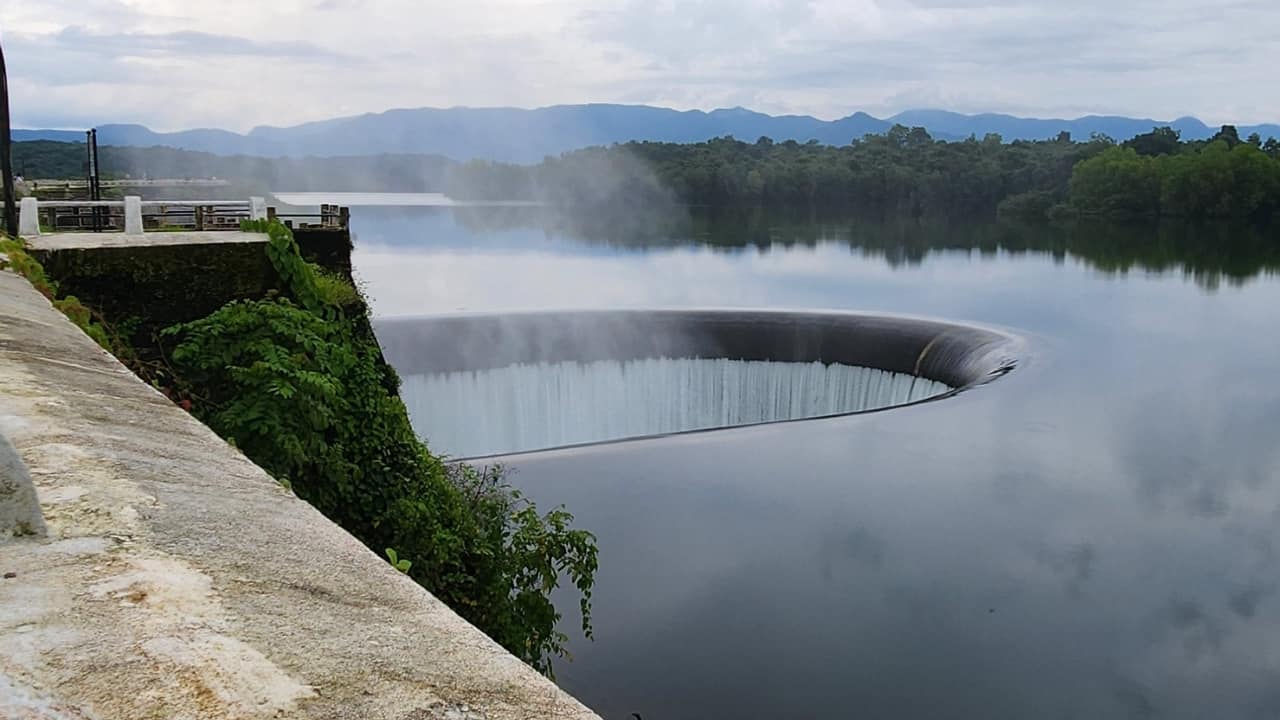
Nestled in the heart of South Goa, Curdi is a village shrouded in mystery. It’s not just any ordinary destination—Curdi is a place that disappears into the depths of the Salaulim Dam for 11 months a year, only to reappear, like a ghost from the past, for a brief window during April- May. This rare phenomenon has earned the village the title of Goa’s “Atlantis,” and visiting it is like stepping into a forgotten chapter of the region's history.
The Vanishing Village: A Hidden Story of Water and Time
Curdi was once a thriving village, home to thousands of locals who lived off its fertile lands. But everything changed in the 1970s when the construction of the Salaulim Dam flooded the area. The villagers were relocated, and Curdi, along with several neighboring communities, was submerged beneath the dam’s waters. For nearly the entire year, the village lies hidden from sight, as the dam’s waters cover its remnants.
 Salaulim Dam in Goa (Image: Canva)
Salaulim Dam in Goa (Image: Canva)
However, every year, as the weather turns drier, the waters of the dam recede, and Curdi slowly reveals itself. For a fleeting period in May, the village’s ruins reappear, giving visitors a rare glimpse into a once-thriving community that time and nature have claimed.
What to See in Curdi When It Emerges
When Curdi resurfaces, it’s a hauntingly beautiful sight. The old Shree Someshwar Temple, dedicated to Lord Shiva, is one of the few structures that remains remarkably intact, standing tall amid the ruins of what was once a bustling village. As you wander through the area, you can catch sight of long-abandoned houses, pathways, and walls emerging from the earth, offering an eerie but fascinating walk through the past.
How to Visit Curdi
Getting to Curdi is an adventure in itself. The village is located just a few kilometers from the Salaulim Dam, along the Curchorem-Ponda road. Once you arrive, the village can be explored on foot or by boat, depending on how much of the village has resurfaced. The sight of old structures rising from the water is truly something to behold, and while it might feel like stepping into another world, it’s important to have a local guide who can walk you through the history and significance of the site.
When to Visit
The ideal time to visit Curdi is during the peak summer months, especially in April and May, just before the monsoon rains arrive. This is when the water levels in the dam are low enough for the village’s remains to surface. But since the exact timing can vary from year to year, it’s wise to keep an eye on local reports or check with guides for the best window to visit.
The Allure of Curdi
More than just a hidden village, Curdi represents the delicate interplay between human settlements and nature’s ever-changing forces. It’s a testament to the resilience of a community that once called this land home, and a stark reminder of the impermanence of life. For those who venture into its depths, Curdi offers not only a historical experience but also a quiet moment for reflection on how quickly time can sweep entire places and histories beneath the surface.
Curdi is not just a destination; it’s a unique story that emerges from the water once every year. If you’re in search of something different, something that whispers tales of the past while standing still in time, Curdi is a journey that shouldn’t be missed.
Discover the latest Business News, Sensex, and Nifty updates. Obtain Personal Finance insights, tax queries, and expert opinions on Moneycontrol or download the Moneycontrol App to stay updated!
Find the best of Al News in one place, specially curated for you every weekend.
Stay on top of the latest tech trends and biggest startup news.